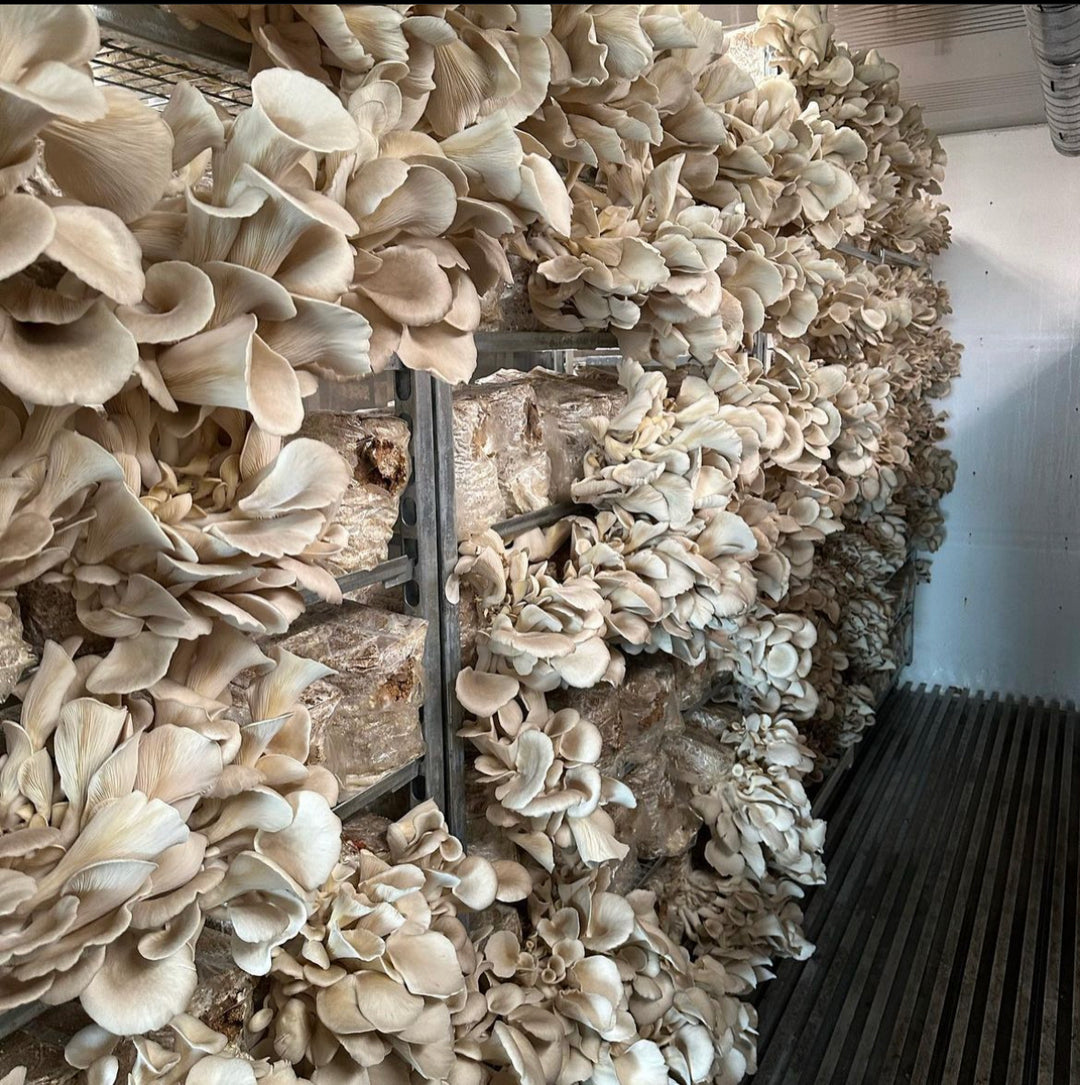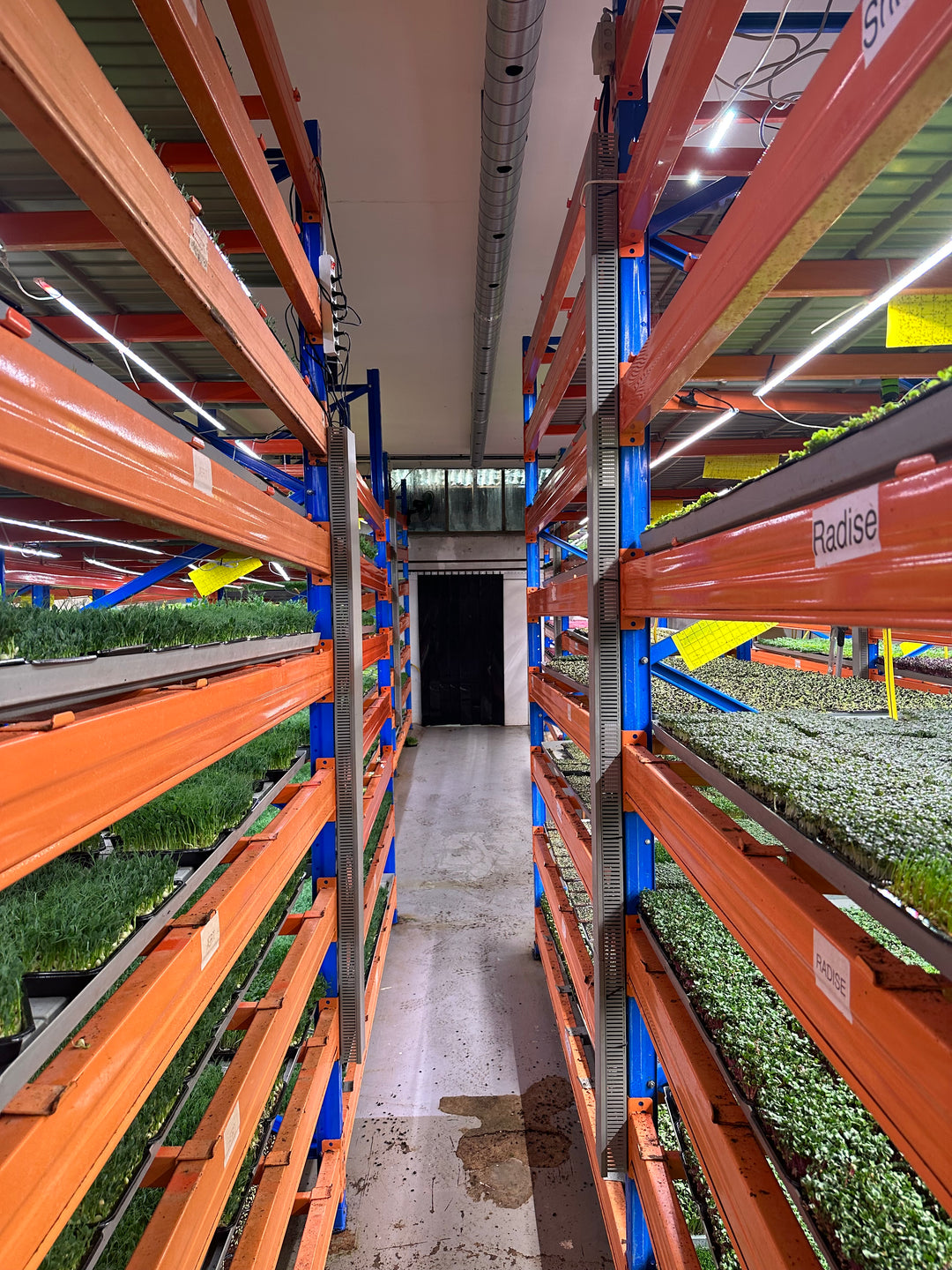Cultivating National Resilience: How Indoor Farming Fosters Food Independence and Security

In a world increasingly shaped by geopolitical shifts, climate change, and global supply chain vulnerabilities, national food security has surged to the forefront of strategic priorities for many countries. The reliance on imported food leaves nations susceptible to external shocks, price volatility, and even geopolitical leverage. This is where indoor farming, encompassing vertical farms and advanced hydroponic systems, is emerging as a powerful tool, enabling countries to cultivate a new era of food independence and fortify their national food security.
The Imperative for Food Independence
For centuries, food security has been largely defined by a nation's ability to produce or
acquire enough food to feed its population. Historically, this meant having ample arable land and favorable climates. However, the 21st century has introduced new variables:
● Shrinking Arable Land: Urbanization, desertification, and soil degradation are
reducing the amount of productive land available for traditional agriculture.
● Climate Change Volatility: Extreme weather events—droughts, floods, heatwaves,
and unseasonable frosts—are making outdoor farming increasingly unpredictable,
leading to crop failures and unstable yields.
● Global Supply Chain Fragility: Events like pandemics, trade disputes, and
geopolitical conflicts can disrupt the international flow of food, creating shortages and
price spikes, as evidenced during recent years.
● Population Growth: A burgeoning global population demands ever-increasing food
production, placing further strain on traditional methods.
These factors underscore the urgent need for nations to diversify their food sources and
reduce their dependence on external suppliers, pushing the concept of food independence from an ideal to a strategic necessity.
How Indoor Farming Builds National Food Independence
Indoor farming offers a compelling pathway to national food independence by addressing the limitations of traditional agriculture head-on:
1. Climate-Controlled, Year-Round Production:
○ Immunity to External Shocks: By growing food in fully controlled
environments, indoor farms are immune to the vagaries of weather. This
means consistent, predictable yields regardless of droughts, floods, or
temperature extremes. For countries with challenging climates (e.g., arid
regions, cold northern latitudes), this is revolutionary, allowing them to grow
fresh produce that was previously impossible without vast imports.
○ Stable Supply Chains: This predictable production translates directly into a
more stable national food supply, reducing reliance on seasonal imports and
ensuring a consistent flow of fresh produce to citizens.
2. Maximized Land Efficiency:
○ Urban Food Hubs: Indoor vertical farms require significantly less land than
traditional farms for equivalent output. This allows food production to occur
within or very close to urban centers, where the majority of the population
resides, even in land-scarce nations.
○ Repurposing Space: Existing industrial buildings, warehouses, or even
underground spaces can be repurposed for indoor farming, turning
unproductive urban real estate into food-generating assets. This avoids the
need to convert natural habitats or valuable agricultural land for new farms.
3. Radical Resource Efficiency:
○ Water Conservation: Hydroponic and aeroponic systems used in indoor
farming recirculate water, reducing consumption by up to 95% compared to
conventional farming. For countries facing severe water scarcity, this benefit
is paramount, allowing them to grow water-intensive crops with minimal strain
on precious freshwater reserves.
○ Optimized Nutrient Use: Nutrients are delivered precisely to the plants,
minimizing runoff and pollution, further enhancing environmental sustainability
at a national level.
4. Reduced Food Miles and Carbon Footprint:
○ Localized Production: Growing food within a nation's borders, often close to
consumption points, drastically cuts down on "food miles." This reduces
transportation costs, energy consumption, and associated greenhouse gas
emissions.
○ Enhanced Freshness and Reduced Waste: Shorter transit times mean
fresher produce with a longer shelf life, leading to significantly less
post-harvest waste throughout the supply chain. This directly contributes to
national food availability.
5. Enhanced Food Safety and Traceability:
○ Controlled Environment: The enclosed nature of indoor farms offers a
higher degree of control over potential contaminants, pests, and diseases,
reducing the need for chemical pesticides and improving overall food safety.
○ Farm-to-Fork Transparency: Advanced monitoring and data collection within
indoor farms allow for robust traceability, enabling quick identification and
recall of products if issues arise, building consumer trust and strengthening
national food safety protocols.
National Examples of Cultivating Independence:
Several nations are actively embracing indoor farming as a cornerstone of their food security strategies:
● Singapore: As a small, densely populated island nation with minimal arable land,
Singapore imports over 90% of its food. Recognizing this vulnerability, the
government has set an ambitious "30 by 30" goal: to produce 30% of its nutritional
needs locally by 2030. Vertical farms, aquaculture, and high-tech greenhouses are
central to this strategy, with significant government investment and incentives for
local food production.
● United Arab Emirates (UAE): Situated in an arid desert climate, the UAE
traditionally relies heavily on food imports. Dubai and Abu Dhabi are investing heavily
in massive vertical farms, such as Bustanica, one of the world's largest, to grow leafy
greens and other produce. This strategic move aims to diversify their food sources
and enhance self-sufficiency in a challenging environment.
● Japan: After the 2011 tsunami and earthquake highlighted supply chain
vulnerabilities, Japan has heavily invested in "plant factories" – highly automated
indoor vertical farms. With limited farmland and a strong emphasis on technology,
Japan is a leader in using indoor farming to ensure a stable supply of fresh produce,
particularly leafy greens.
● The Netherlands: Already a global powerhouse in traditional greenhouse
horticulture, the Netherlands is a leader in Controlled Environment Agriculture (CEA).
While not aiming for 100% self-sufficiency in all crops due to its export-oriented
model, its advanced indoor farming sector contributes significantly to its food
independence and positions it as a global leader in AgTech innovation.
● Canada: Facing long, cold winters and vast distances, Canada imports a significant
portion of its fresh produce, particularly leafy greens. The rise of vertical farms and
greenhouses across the country is enabling year-round local production, reducing
reliance on imports, and providing fresh food to remote communities.
Challenges and the Path Forward
While the benefits are clear, scaling indoor farming to achieve national food independence
faces challenges:
● High Initial Capital Costs: The investment required for advanced indoor farming
facilities can be substantial. Government incentives, private investment, and
favorable policies are crucial for widespread adoption.
● Energy Consumption: The energy demand for lighting and climate control remains
a key concern. The integration of renewable energy sources (solar, wind) and
continuous improvements in energy efficiency are vital for long-term sustainability.
● Limited Crop Variety (for economic viability): While the range is expanding, many
indoor farms still focus on high-value, fast-growing crops like leafy greens and herbs.
Expanding economically viable indoor cultivation to include a wider array of
vegetables and even staple crops is a continuous area of research and development.
● Skills Gap: Operating high-tech indoor farms requires specialized knowledge in plant
science, engineering, and data analytics, necessitating investment in training and
education. Despite these hurdles, the trajectory is clear. As technology advances, costs decrease, and the urgency of food security grows, indoor farming will increasingly become a strategic asset for nations worldwide. It represents a tangible step towards a future where countries are less vulnerable to external shocks, more resilient in the face of climate change, and ultimately, more independent in feeding their own populations. The green revolution is moving indoors, promising a more secure and sustainable plate for everyone.


